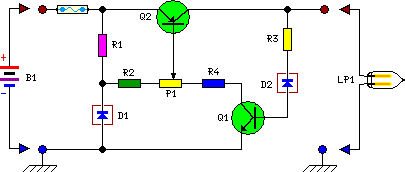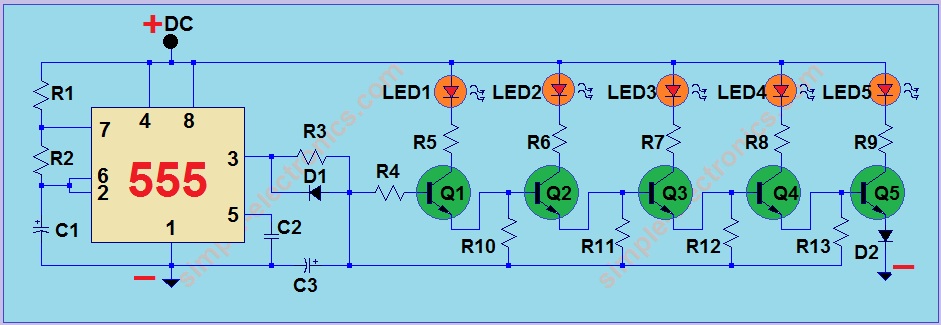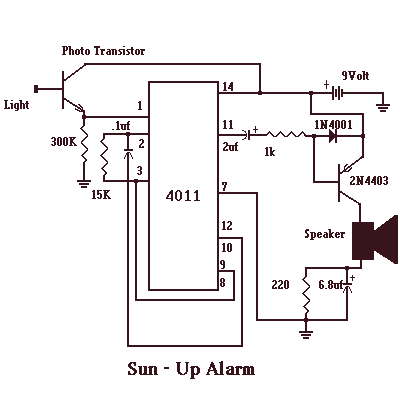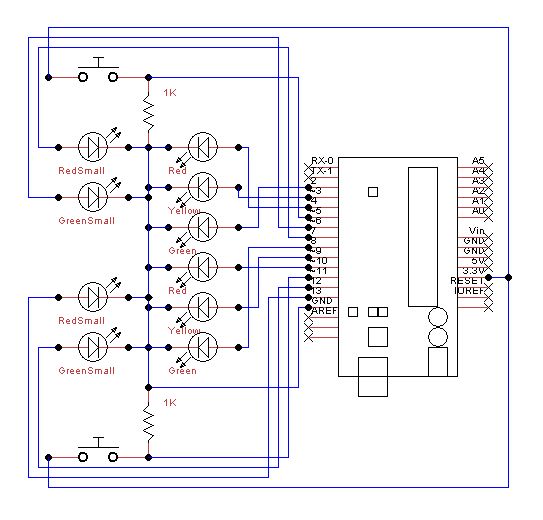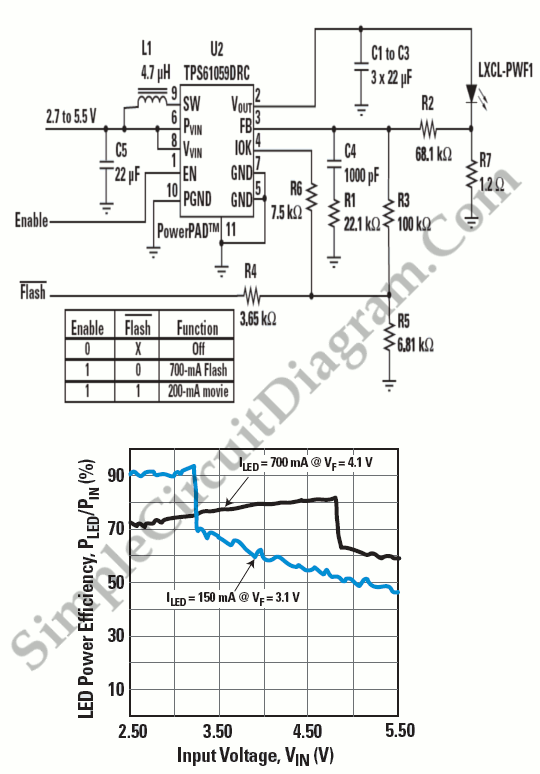
Sun Light Chaser
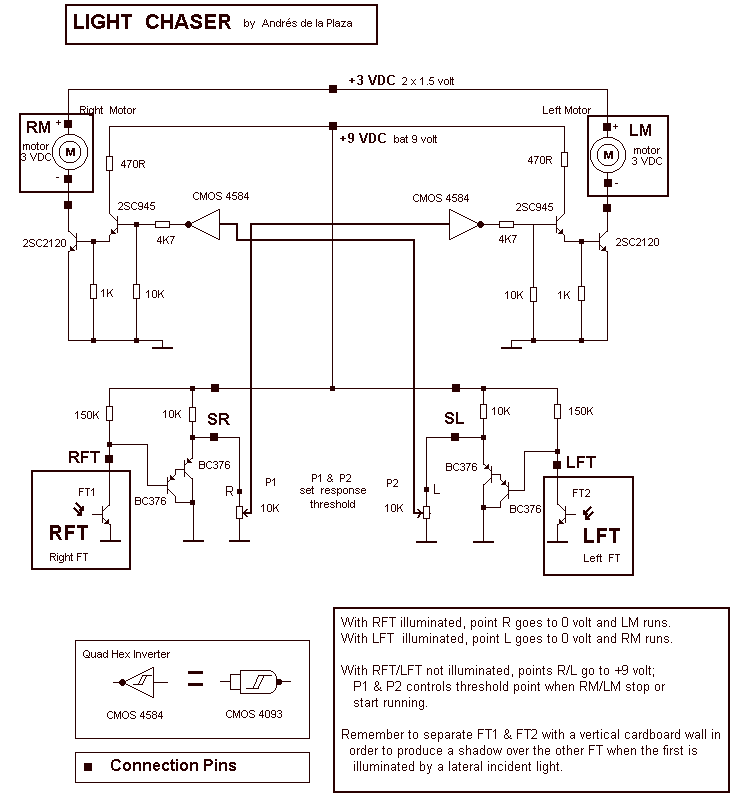
With RFT illuminated, point R goes to 0 volt and LM runs. With LFT illuminated, point R goes to 0 volt and RM runs. With RFT and/or LFT not illuminated, points R/L go to +9 volt; P1 and P2 controls threshold point when RM/LM stop or start running. Remember to separate FT1 and FT2 with a vertical cardboard wall in order to produce a shadow over the other FT when the first is illuminated by a lateral incident light.
The described system appears to be a light-sensitive control circuit utilizing two photo-transistors or photo-resistors, labeled as RFT (Right Front Transistor) and LFT (Left Front Transistor). When RFT is exposed to light, it activates a corresponding control mechanism, causing point R to transition to 0 volts. This action initiates the operation of LM (Left Motor or Load). Similarly, when LFT is illuminated, point R again drops to 0 volts, activating RM (Right Motor or Load).
In the absence of illumination on both RFT and LFT, both points R and L revert to a high state of +9 volts, indicating a standby or inactive condition for the motors. The functionality of the system is further refined by the inclusion of two control points, P1 and P2, which are employed to set the threshold levels for the activation or deactivation of RM and LM. These control points likely consist of variable resistors or potentiometers that allow for fine-tuning of the sensitivity of the circuit to light levels.
To prevent interference between the two photo-sensitive components, it is crucial to implement a physical barrier, such as a vertical cardboard wall, between FT1 and FT2. This barrier is designed to create a shadow effect, ensuring that the illumination of one sensor does not inadvertently trigger the other, thus maintaining the integrity of the system's operation.
In summary, the described circuit is a light-activated control system for motors, utilizing photo-sensitive components and adjustable thresholds to manage the operation of two distinct loads based on light detection. The careful placement and isolation of the sensors are essential for optimal performance.With RFT illuminated, point R goes to 0 volt and LM runs. With LFT illuminated, point R goes to 0 volt and RM runs. With RFT and/or LFT not illuminated, points R/L go to +9 volt; P1 and P2 controls threshold point when RM/LM stop or start running. Remember to seperate FT1 and FT2 with a vertical cardboard wall in order to produce a shadow over the other FT whenthe first is illuminated by a lateral incident light.
🔗 External reference
The described system appears to be a light-sensitive control circuit utilizing two photo-transistors or photo-resistors, labeled as RFT (Right Front Transistor) and LFT (Left Front Transistor). When RFT is exposed to light, it activates a corresponding control mechanism, causing point R to transition to 0 volts. This action initiates the operation of LM (Left Motor or Load). Similarly, when LFT is illuminated, point R again drops to 0 volts, activating RM (Right Motor or Load).
In the absence of illumination on both RFT and LFT, both points R and L revert to a high state of +9 volts, indicating a standby or inactive condition for the motors. The functionality of the system is further refined by the inclusion of two control points, P1 and P2, which are employed to set the threshold levels for the activation or deactivation of RM and LM. These control points likely consist of variable resistors or potentiometers that allow for fine-tuning of the sensitivity of the circuit to light levels.
To prevent interference between the two photo-sensitive components, it is crucial to implement a physical barrier, such as a vertical cardboard wall, between FT1 and FT2. This barrier is designed to create a shadow effect, ensuring that the illumination of one sensor does not inadvertently trigger the other, thus maintaining the integrity of the system's operation.
In summary, the described circuit is a light-activated control system for motors, utilizing photo-sensitive components and adjustable thresholds to manage the operation of two distinct loads based on light detection. The careful placement and isolation of the sensors are essential for optimal performance.With RFT illuminated, point R goes to 0 volt and LM runs. With LFT illuminated, point R goes to 0 volt and RM runs. With RFT and/or LFT not illuminated, points R/L go to +9 volt; P1 and P2 controls threshold point when RM/LM stop or start running. Remember to seperate FT1 and FT2 with a vertical cardboard wall in order to produce a shadow over the other FT whenthe first is illuminated by a lateral incident light.
🔗 External reference
